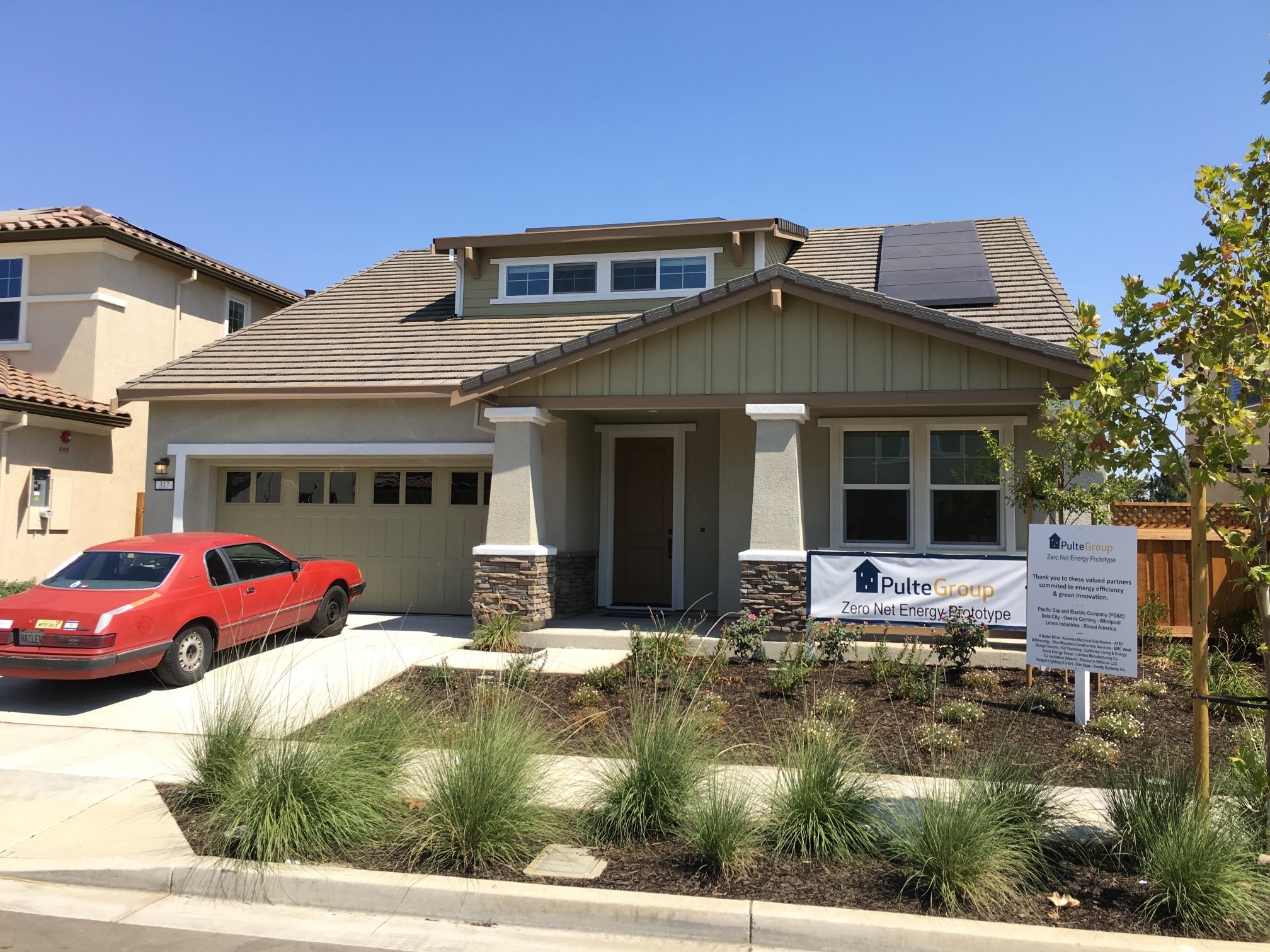 Project Title
Project Title
Zero Net Energy Production Builder Demonstration: Brentwood Monitoring Report
Project Number ET14PGE8913 Organization PG&E End-use HVAC, Water Heating/DHW/HPWH, Whole Building, Other Sector Residential Project Year(s) 2014 - 2019Under the auspices of PG&E’s Zero Net Energy (ZNE) Production Builder Demonstration, PulteGroup built a 2,359 square foot ZNE home in Brentwood, CA with a semi-conditioned attic and an air source heat pump. This report describes the results from monitoring the occupied home for a full year.
The ZNE definition used for the design was based on Time Dependent Valuation (TDV) of energy, and the home met ZNE design requirements. However, TDV cannot be calculated from measured data. Therefore, this report assesses the ZNE performance of the home, based on site energy, and by comparing monitored site energy to modeled site energy. The same design with different occupants, or during another year, may perform differently. It was not expected that the project would achieve net zero site energy. Actual site energy use was compared to two models: one using the Typical Meteorological Year (TMY) and the other using the Actual Meteorological Year (AMY) for Concord, California during the monitoring period. Total site energy use was 31% more than modeled projections using the TMY and 39% more than modeled projections using the AMY. Actual solar production was different than modeled: 0.5% greater than TMY and 8.1% less than AMY.
Total PV production offset 44% of total site energy consumption. The TMY model predicted that the PV would offset 58% of site consumption, and the AMY model predicted 67%. The actual 44% offset is not commensurate with either prediction, indicating that the home fell short of ZNE performance even though it achieved ZNE design. The most likely reason for the home not meeting ZNE performance is the difference between modeled and actual occupant behavior.
Plug loads represent the largest energy end use, at 23.9% of total household electricity use. DHW, cooling, non-cooking appliances, and space heating represent the next largest energy end uses, at 18.5%, 15.6%, 15.6%, and 13.4% of total energy consumption, respectively. Appliance energy use was dominated by the clothes dryer, accounting for 58.5% of appliance energy use and 10.7% of total energy use. Even though the overall energy consumption was 31% higher than modeled, the relative proportion accounted for by each end use was very similar to both the AMY and TMY models except for cooling and DHW: cooling was a higher proportion and DHW a lower one.
Both a monitoring report and case study are attached.
SIx ZNE homes were designed and constructed in this Emerging Technologies project. The first set of reports detailed the design and construction process of a ZNE home in Stockton built by Habitat for Humanity of San Joaquin County. They can be found here at the ETCC website: Link
In addition detailed reports about the other 4 participating houses are available:
A combined report for all 6 projects can be found here: link
